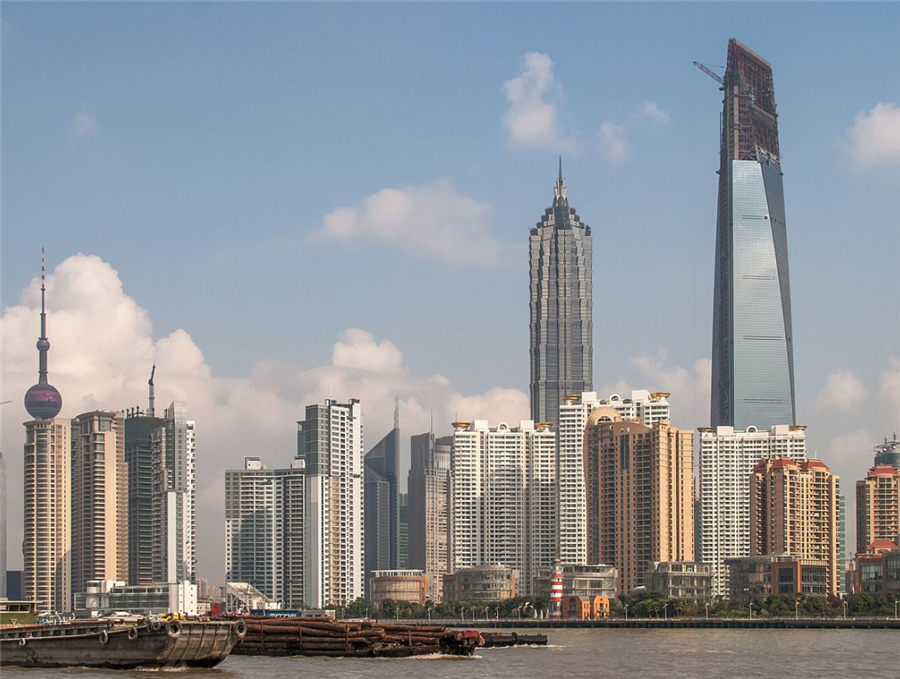
(Bloomberg) — Rising U.S.- China trade tensions threaten to curb consumer purchasing power, crimp productivity growth and limit global economic expansion, according to the world’s biggest mining company.
The confrontation between the world’s top two economies, “along with an increasingly unpredictable policy formation process” in some nations, serves to reduce consumer confidence and business certainty, BHP Billiton Ltd. said Tuesday in its annual report. Protectionist policies and political uncertainty lower the achievable ceiling for global economic growth, it said.
Melbourne-based BHP released the report before the Trump administration’s decision to impose a 10 percent tariff on about $200 billion of Chinese goods next week and to more than double the rate in 2019.
BHP sees growth rates cooling in the housing and auto sectors, while machinery and infrastructure are expected to provide some stability
.
Underlying demand conditions in China remain reasonably robust, and the nation’s response to escalating trade tensions will likely be to lift infrastructure spending, a move with “potential to be quite commodity intensive and spur growth,” Olivia Markham, portfolio manager at BlackRock Inc.’s World Mining Trust told Bloomberg Television in an interview Tuesday.
BHP, a supplier of materials including iron ore, oil and copper, has a more positive longer-term outlook, with population growth and rising living standards expected to generate demand for energy, metals and fertilizers for decades. “New demand centers will emerge where the twin levers of industrialization and urbanization are still immature today,” the company said.
The producer confirmed Chief Executive Officer Andrew Mackenzie’s base salary would be held flat at $1.7 million and said taxes, royalties and other payments to governments rose to $7.8 billion in fiscal 2018. Shareholders will vote this year to change the company’s formal name to BHP Group, according to a separate filing.
Here’s the producer’s outlook on key global markets:
BHP expects China’s growth to remain steady in the short-term, slowing modestly through 2018 in line with the official gross domestic product target range of about 6.5 percent.China’s current efforts to reduce debt and deal with housing inflation are seen likely to continue.
Any continued slowing in China’s economic growth risks weaker demand and lower prices for BHP’s products, it said. China accounted for more than half of revenue in the year to June 30, including about 52 percent of sales of iron ore — the company’s top earner.
China’s “Belt and Road” initiative is forecast by BHP to involve spending of about $1.3 trillion, which could add as much as 150 million tons of steel demand over the long-term. The nation’s focus on improving environmental standards is supporting demand for high-quality products.
Trade issues threaten to reduce consumer purchasing power through higher prices for imported goods or domestic goods that use imported components, while restrictive migration policies can curb the flow of global talent and dent productivity growth, BHP said.
The U.S. economy has received a significant boost from the Tax Cuts and Jobs Act, though some of the impact is likely to be offset by the Federal Reserve’s monetary policy response, the company said.
Consumer demand is driving a positive short-term outlook, while progress on key reforms, including cuts to goods and services taxes, real estate regulation, insolvency resolution and demonetization of high denomination bills has been encouraging, BHP said.
The producer expects India’s economic growth to average more than 7 percent a year between fiscal year 2016 and fiscal year 2020, with energy and metals demand rising at a similar level.
Japan’s aging population, low birth rate and public debt burden are constraints on long-term growth, which is likely to stagnate without reforms. While the nation may win a short-term boost from the 2020 Tokyo Olympics, it appears monetary and fiscal policy are proving ineffective at spurring domestic demand over the medium-term, according to BHP. Any sustained lift in Japanese growth “is likely to have to come from external sources,” it said.
Downside risks have been reduced, though significant micro-economic reform is required in Europe’s south to prevent longer-run stagnation, the miner said. In northern regions, lower savings rates would boost growth at home and help to re-balance demand within the euro zone.
(By David Stringer)